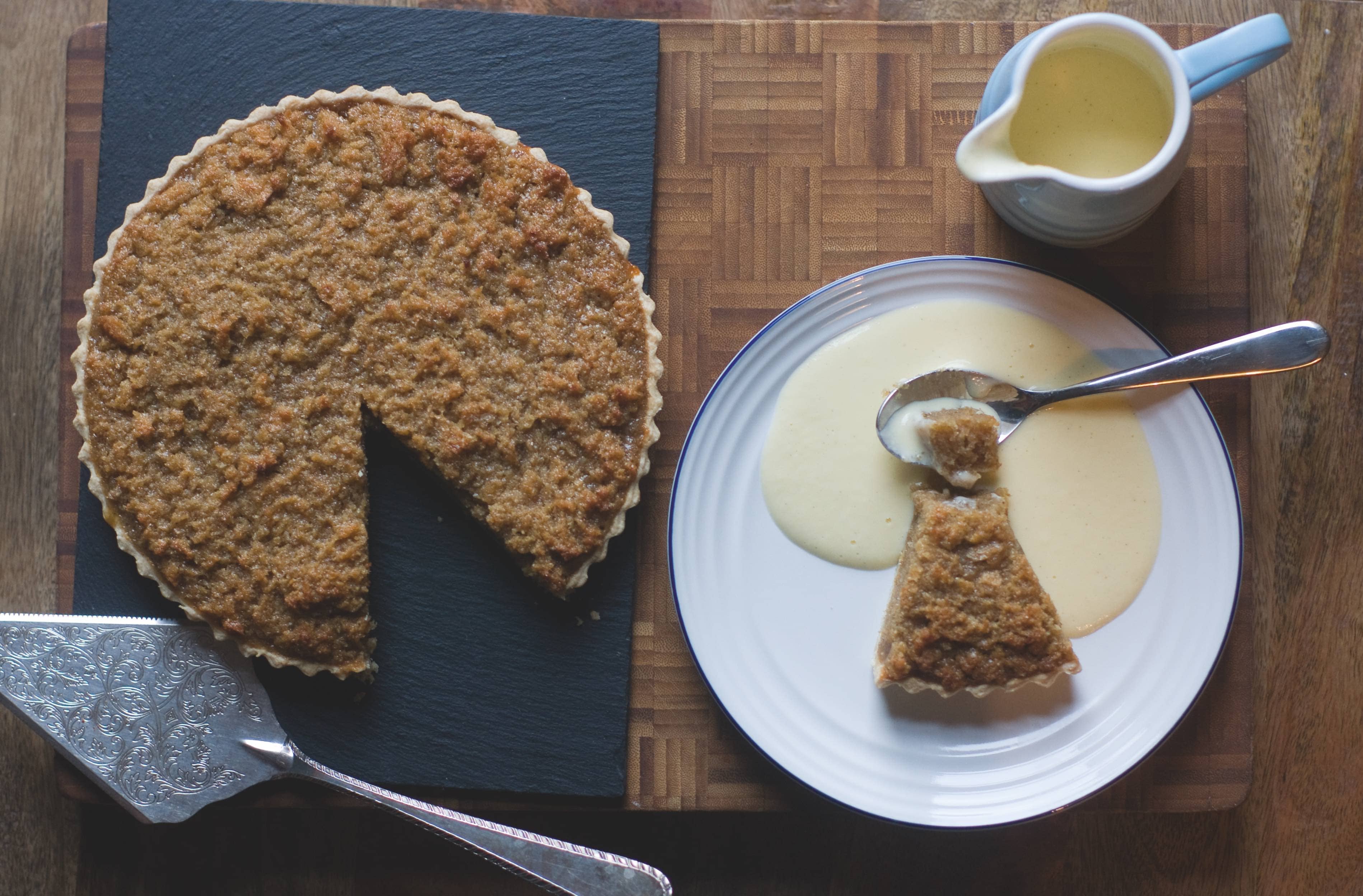‘Come along, kiddie-winkies! Come and get your treacle tart,’ the Child Catcher trills in Chitty Chitty Bang Bang, to lure children away. The youngsters are particularly taken with the idea of treacle tart, and it’s not difficult to imagine why: unapologetically sweet and sticky, it’s irresistible to small, greedy hands.
It’s easy to dismiss treacle tart as a nursery food. But that, of course, is part of its charm. It’s the Platonic ideal of a childhood treat, and a byword for comfort. In Harry Potter, the love potion Amortentia smells of whatever someone loves most in the world; to Harry, it smells of broomsticks, Ginny Weasley’s hair and treacle tart, the first dessert he ever ate at Hogwarts.
Anyone making a treacle tart goes in with their eyes open. The first ingredient – a whole tin of golden syrup – is the giveaway: this is a dish with little light and shade. Attempting to make one that isn’t sweet is like trying to make a low-fat suet pastry, or a booze-free Long Island Iced Tea: you’re missing the whole point.

Britain’s best politics newsletters
You get two free articles each week when you sign up to The Spectator’s emails.
Already a subscriber? Log in







Comments
Join the debate for just £1 a month
Be part of the conversation with other Spectator readers by getting your first three months for £3.
UNLOCK ACCESS Just £1 a monthAlready a subscriber? Log in